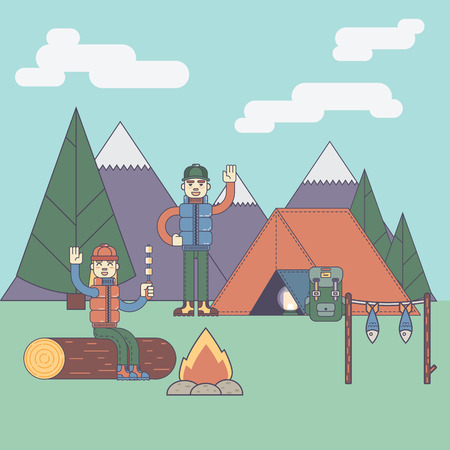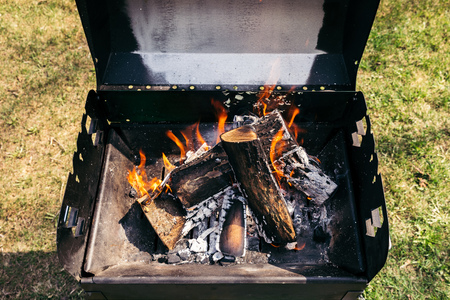Campfire Cooking Essentials
Ready to take your backcountry meals to the next level? Cooking gourmet dishes in the wild isnt just for professional chefs—its totally doable with the right tools and a little prep. Whether youre deep in the woods or chilling by a lake, having the right campfire cooking gear makes all the difference. Heres what you’ll need to create 5-star dinners under the stars.
Must-Have Cooking Gear
You don’t need a full kitchen to whip up incredible meals outside. Just a few smart, portable items will do the trick:
| Item | Why You Need It |
|---|---|
| Portable Grill or Camp Stove | Provides consistent heat and control, perfect for searing steaks or simmering sauces. |
| Cast Iron Skillet | Heavy-duty and versatile—ideal for everything from pancakes to pan-seared trout. |
| Grill Grate | Lays over your campfire for direct flame grilling. Great for veggies and burgers. |
| Long-Handle Tongs & Spatula | Keeps your hands safe while managing food over open flames. |
| Folding Table | A clean surface to prep ingredients or serve dinner in style. |
Spice Up Your Campsite Kitchen
The secret to gourmet cooking? Flavor. Build a compact spice kit that includes basics like salt, pepper, garlic powder, paprika, cumin, and maybe even some smoked sea salt for flair. Small plastic containers or reusable tins work great for keeping things organized without taking up too much space.
Recommended Spice Kit Setup:
| Spice | Use Case |
|---|---|
| Garlic Powder | Adds depth to meats, soups, and stews |
| Paprika (Smoked) | Enhances grilled dishes with smoky flavor |
| Cumin | Perfect for chili, rice dishes, and tacos |
| Dried Basil & Oregano | Makes pasta night at camp feel fancy |
Sustainable Storage Solutions
If youre going gourmet, you’re probably packing fresh ingredients. Make sure they last with smart storage options. Use insulated cooler bags or bear-proof containers where necessary. For dry goods and spices, go for refillable silicone pouches or stackable BPA-free containers—they’re light, durable, and eco-friendly.
Pro Tip:
Pre-chop your veggies and marinate meats at home before you hit the trail. Store them in leak-proof containers so they’re ready to go when it’s time to cook. Less mess, more flavor!
With these essentials in your pack, you’re well on your way to creating unforgettable meals in the wild. Let’s turn those campfires into kitchens—and those trailside dinners into something worth savoring.
2. Prep Like a Pro: At-Home Planning & Packing
Cooking gourmet meals in the backcountry starts way before you strike a match. A little planning at home goes a long way when it comes to creating 5-star campfire dinners. With smart prep and efficient packing, you can enjoy bold flavors and satisfying textures without lugging your entire kitchen into the woods.
Plan Your Campfire Menu Ahead of Time
Before you hit the trail, sit down and sketch out each meal. Consider how many people youre cooking for, any dietary preferences, and how long youll be out. Choose recipes that can share ingredients to cut down on weight and waste. Think about texture and variety—pair something creamy like mashed sweet potatoes with grilled protein or add crunch with toasted nuts or croutons.
Sample 2-Day Gourmet Camp Menu:
| Meal | Dish | Main Ingredients |
|---|---|---|
| Day 1 Dinner | Campfire Ribeye with Chimichurri | Ribeye steak, fresh herbs, olive oil, garlic |
| Day 1 Dessert | Grilled Peaches with Honey Mascarpone | Peaches, mascarpone, honey, cinnamon |
| Day 2 Breakfast | Savory Breakfast Skillet | Eggs, potatoes, onions, bell peppers, cheddar cheese |
| Day 2 Dinner | Creamy Wild Mushroom Pasta | Dried mushrooms, pasta, heavy cream powder, parmesan |
| Day 2 Dessert | Cocoa-Coffee Dutch Oven Brownies | Baking mix, cocoa powder, instant espresso, eggs (pre-cracked) |
Prep Ingredients at Home
The more you do at home, the less you have to fuss with at camp. Chop veggies, marinate proteins, measure spices into mini containers or resealable bags labeled by meal. Vacuum-seal or double-bag anything that could leak or spoil. Pre-cook grains like rice or farro and freeze them; they’ll help keep your cooler cold and reheat easily over the fire.
Pro Tips for Home Prep:
- Pre-measure everything: Use stackable spice containers or Tic Tac boxes for small amounts of seasoning.
- Use freezer bags: Label each meal and include cooking instructions on the bag using a Sharpie.
- Bring only what you need: Avoid whole bottles of olive oil or vinegar—portion into travel-size containers.
- Hard cheeses over soft: Parmesan lasts longer without refrigeration than mozzarella or brie.
- Sous-vide style meats: Cook proteins ahead of time and reheat in hot water at camp.
Pack for Freshness & Efficiency
Your cooler is prime real estate—pack it tight and smart. Freeze items like soups or sauces flat so they double as ice packs. Use color-coded dry bags to organize food by day or meal type. Keep snacks and ready-to-eat items easy to grab for energy boosts between hikes or while tending the fire.
Packing Checklist Essentials:
- Cooler with ice blocks or frozen water bottles (they melt into drinking water!)
- Labeled Ziploc bags for prepped ingredients
- Dutch oven liner parchment paper (for easy cleanup)
- Tongs, spatula, chef’s knife in blade guard
- Lighter/matches in waterproof container + backup fire starter
- Cutting board (folding style saves space)
- Sponge & biodegradable soap for quick cleanup
- Airtight containers for leftovers (nothing wasted!)
A little forethought turns a good camp meal into something extraordinary. With these prep tips under your belt, you’re well on your way to becoming a true backcountry gourmet chef—no cabin required.

3. Fire Up the Flavor: Techniques That Work Outdoors
If youre aiming to bring gourmet-level meals to your backcountry adventures, mastering outdoor cooking techniques is key. You dont need a full kitchen to serve up something amazing—just the right tools, a bit of practice, and a taste for adventure. Heres how to turn your campsite into a five-star outdoor kitchen.
Cast Iron Skillet Searing
A cast iron skillet is a true workhorse in any camp kitchen. It retains heat beautifully and gives your food that perfect sear youd expect from a high-end restaurant. Whether youre cooking steaks, fish fillets, or even breakfast hash, this method delivers big flavor with minimal fuss.
Pro Tip:
Preheat the skillet over medium-high heat on your camp stove or grill grate. Use oil with a high smoke point like avocado or canola oil for best results.
Foil Packet Roasting
This technique is perfect for those who want delicious meals without tons of cleanup. Just wrap your ingredients in heavy-duty aluminum foil and place them directly on hot coals or over the fire. Its ideal for veggies, fish, chicken, or even dessert options like fruit crisps.
Easy Foil Packet Meal Ideas:
| Ingredients | Cooking Time | Taste Profile |
|---|---|---|
| Salmon + lemon + dill + asparagus | 15-20 minutes | Fresh & citrusy |
| Chicken + bell peppers + onions + fajita seasoning | 20-25 minutes | Spicy & savory |
| Sliced apples + cinnamon + brown sugar + butter | 10-15 minutes | Sweet & cozy |
Dutch Oven Baking
The Dutch oven is an old-school staple that still earns its place in modern camp kitchens. Its thick walls and tight-fitting lid create an oven-like environment that’s great for baking bread, slow-cooking stews, or even making lasagna in the wild.
Baking Tips:
- Use charcoal briquettes on top and bottom to control heat evenly.
- Rotate the pot and lid every 10-15 minutes to avoid hot spots.
- Always line the inside with parchment paper or use a trivet to avoid burning.
Choosing the Right Technique
The best method often depends on what youre cooking and how much time you have. Heres a quick comparison guide:
| Technique | Best For | Effort Level | Clean-Up |
|---|---|---|---|
| Cast Iron Searing | Meats, veggies, breakfast dishes | Medium | Moderate (needs scrubbing) |
| Foil Packets | One-pan meals, easy clean-up dinners | Low | Minimal (just toss foil) |
| Dutch Oven Baking | Breads, stews, casseroles, desserts | High (requires temperature control) | Moderate to High (depends on lining) |
No matter which technique you choose, the key is preparation and creativity. With these methods in your toolkit, youll be well on your way to cooking gourmet meals under the stars.
4. 5-Star Recipes for the Wilderness
If youre the kind of camper who packs a chef’s knife alongside your compass, then get ready — this is where your taste buds meet trail life. These gourmet campfire recipes are designed for serious foodies who dont want to sacrifice flavor just because they’re off-grid.
Cedar-Plank Salmon
Infuse your salmon with smoky goodness by cooking it on a cedar plank over an open flame. It’s simple, elegant, and packed with flavor.
Ingredients:
- 1 skin-on salmon fillet (about 1 lb)
- 1 untreated cedar plank (soaked in water for at least 1 hour)
- 2 tbsp olive oil
- Lemon slices
- Fresh dill or thyme
- Salt and pepper to taste
Instructions:
- Place the soaked cedar plank on the fire grate until it starts to smoke lightly.
- Rub salmon with olive oil, salt, and pepper. Top with lemon slices and herbs.
- Set salmon on the plank, cover loosely with foil or a pot lid, and cook for about 15–20 minutes.
Wild Mushroom Risotto
This rich and creamy risotto brings fine dining to your camp kitchen using dehydrated mushrooms and instant rice — no compromise on taste!
Ingredients:
- 1 cup instant rice (preferably arborio-style)
- 1/2 oz dried wild mushrooms (porcini, morel, etc.)
- 2 cups water or broth
- 1 tbsp butter or olive oil
- 1 small shallot or onion (minced)
- Grated parmesan cheese (optional)
Instructions:
- Rehydrate mushrooms in hot water; save the mushroom water as broth.
- Sauté shallots in butter or oil until translucent.
- Add mushrooms and rice. Slowly stir in broth while cooking over low heat.
- Cook until creamy, stirring often. Top with parmesan if you have it.
Bourbon-Glazed Campfire Ribs
A little sweet, a little smoky, and totally indulgent — these ribs will make you forget youre not at a backyard BBQ.
Ingredients:
- 1 rack baby back ribs (pre-cooked or parboiled at home)
- 1/2 cup BBQ sauce
- 2 tbsp bourbon
- 1 tbsp brown sugar
- Foil for wrapping
Bourbon Glaze Mix:
| Ingredient | Amount |
|---|---|
| Bourbon | 2 tbsp |
| BBQ Sauce | 1/2 cup |
| Brown Sugar | 1 tbsp |
Instructions:
- Mix bourbon glaze ingredients together in a small bowl.
- Coat ribs generously with glaze and wrap tightly in foil.
- Place over hot coals or grill grate and heat for about 20–25 minutes until caramelized and heated through.
No matter where your adventure takes you, these recipes prove that you can dine like royalty under the stars. Its all about preparation, creativity, and just a little bit of foodie flair.
5. Pairings & Finishing Touches
Just because youre dining under the stars doesnt mean you have to skimp on flavor or flair. In fact, a well-paired drink and a thoughtfully chosen garnish can elevate your backcountry meal from great to gourmet. Whether youre cooking up fire-grilled trout or a rich campfire chili, lets talk about how to match your dish with the perfect beverage and add those final touches using wild herbs or local finds.
Beverage Pairing for Campfire Cuisine
You don’t need a full bar in your backpack—just a few smart picks that complement your meal. Here are some simple pairings that work beautifully with classic backcountry dishes:
| Dish | Suggested Beverage | Why It Works |
|---|---|---|
| Campfire Grilled Steak | Red Wine (Cabernet Sauvignon) | The bold flavors of the steak match well with the tannins in the wine. |
| Lemon Herb Trout | Crisp Lager or Sauvignon Blanc | The acidity cuts through the richness of the fish and highlights citrus notes. |
| Spicy Camp Chili | Craft IPA or Sparkling Water with Lime | The hoppy bitterness balances spice; sparkling water refreshes between bites. |
| Mushroom Risotto (Rehydrated) | Dry White Wine or Herbal Tea | The earthy mushrooms pair well with light, aromatic drinks. |
Add That Chef’s-Kiss Garnish
The right finishing touch can tie everything together. Here’s how to find or pack ingredients that bring visual appeal and added flavor:
Wild Herbs You Can Forage (With Caution!)
- Pine Needles: Chop finely for a citrusy punch on grilled meats.
- Wild Mint: Perfect for garnishing desserts or steeping into tea.
- Sorrel: Adds a tangy zing to fish and rice dishes.
*Always make sure you correctly identify wild plants before consuming them.*
Packed Garnish Staples for Gourmet Flair
- Dried Edible Flowers: Lightweight and beautiful on any plated dish.
- Lemon Zest Powder: Brightens up stews, pasta, and fish.
- Maldon Sea Salt Flakes: A pinch right before serving adds texture and flavor depth.
A little effort goes a long way when it comes to creating memorable meals outdoors. With smart pairings and thoughtful garnishes, your backcountry dinner becomes more than just survival food—it becomes an experience worth savoring around the fire.


